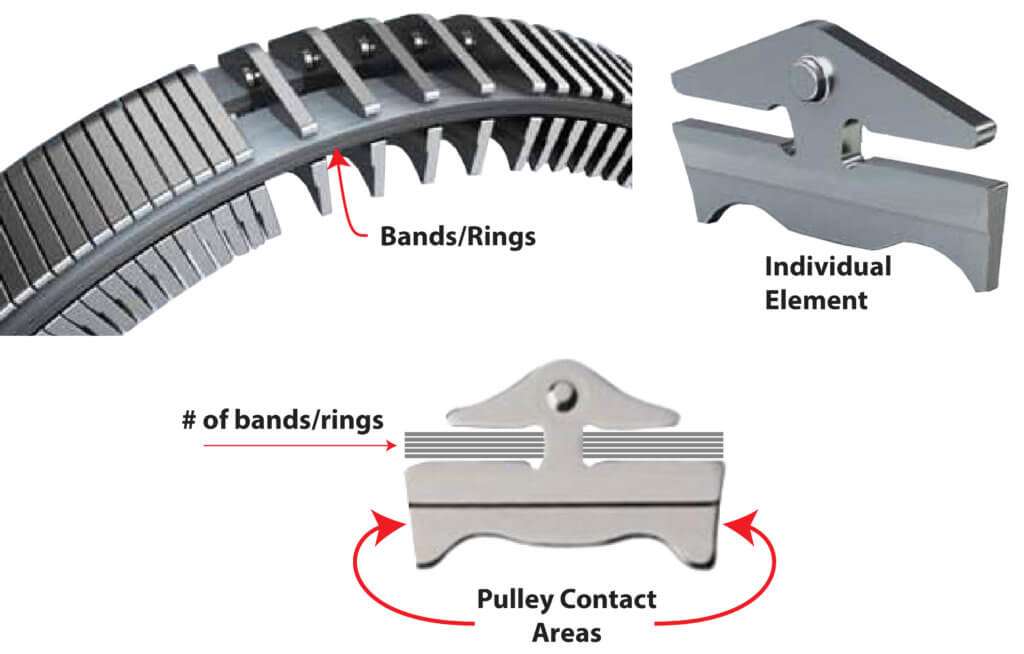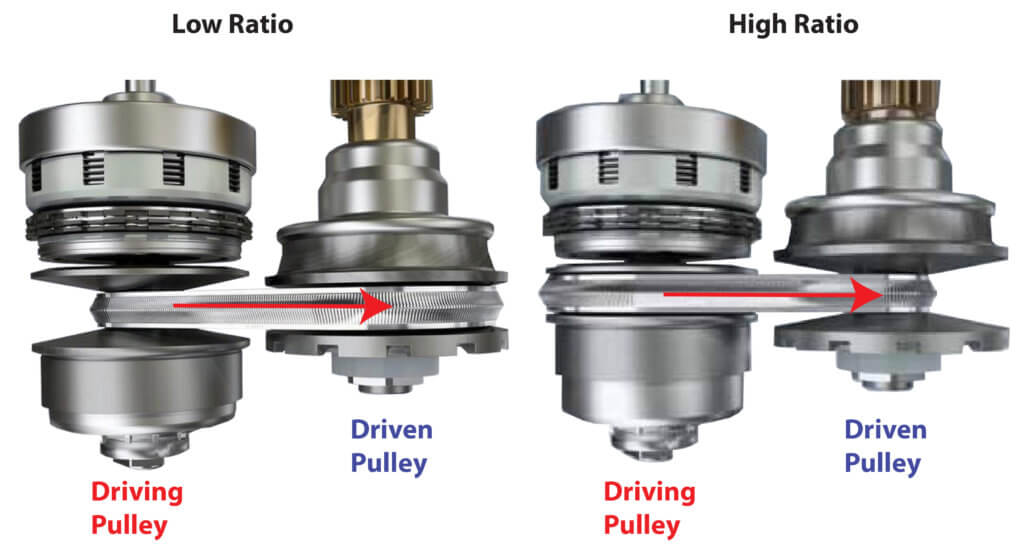How a CVT transmission works
Learn how a CVT transmission works
A CVT transmission has some of the same components as a traditional automatic transmission, but the main propulsion system is much different. I’ll explain what parts are common and how a CVT trasnsmission works.
A CVT transmission has some of the same parts as a regular transmission. For example it has:
• Torque converter
• Pump
• Valve Body
• Clutch pack
• Sun Gear
But it also has:
Two variable sheaves (pulleys)
Pushbelt (can be steel or rubber with impregnated steel elements
The CVT pushbelt is the biggest different
Many early model CVTs used a rubber belt with impregnated steel elements. However most late model CVT transmissions use a steel ring with steel elements. The ring can have multiple wraps to make it stronger. The driving pulley pushes the belt, as opposed to pulling it.

A CVT push belt is made with hundred of individual elements mounted on steel bands
How a CVT transmission works
The engine power is transmitted through the torque converter to the clutch pack and variable driving pulley sheave. The driving pulley transmits the power to the CVT pushbelt which transfers power to a variable driven pulley.
Each pulley consists of two moveable moveable sheaves that infinitely change the pushbelt’s radius. This allows the CVT transmission to achieve an infinite number of transmission “gear” ratios.

This image shows the driving pulley at low and high ratios. But the driven pulley can also change ratios.
CVT transmission advantages
• The CVT is a stepless automatic transmission that eliminates the shift points found in a traditional automatic transmission. So the driver experiences a more seamless acceleration. However, some CVT still use clutch packs so you may feel some minor shifting as the clutch packs engage.
• An increase in MPG up to 7% lower fuel consumption than a manual transmission and reduced CO₂ output
• Compact installation space, lightweight
• More cost-efficient than other automatic transmissions due to smaller number of components
• High power density and optimal NVH behavior (Noise, Vibration, Harshness)
©, 2022 Rick Muscoplat
Posted on by Rick Muscoplat
